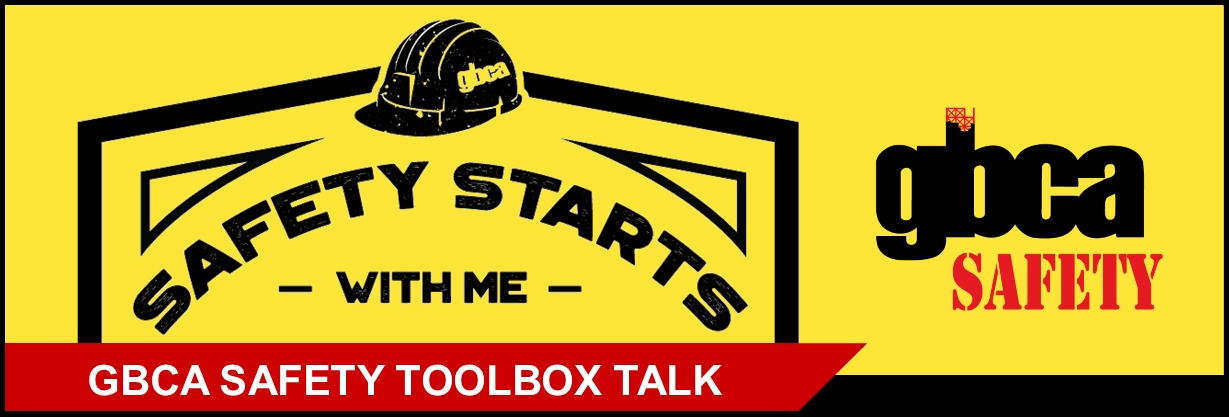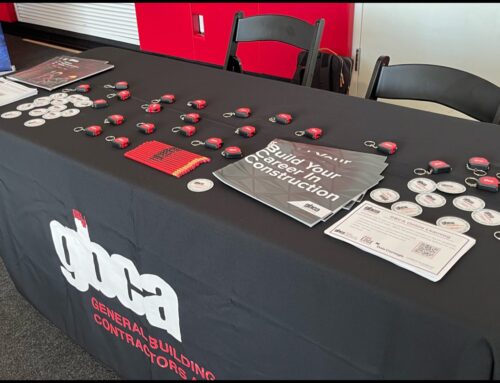This GBCA Toolbox Talk provides tips for avoiding falls from a leading edge. Click below to download the Toolbox Talk as a handout (includes Sign-In Sheet).
Leading Edge Safety
Working at heights is a common part of construction, and one of the hazards is the leading edge of work surfaces, both part of the permanent structure, as well as temporary platforms. We make preparations to work safely at heights by either barricading the leading edge, or by using engineered personal restraint systems. These strategies keep employees from getting to or falling from the leading edge.
Most personal fall arresting lanyards and retractables are NOT designed to go across any leading edge during a fall. Retractables and lanyards are designed to reduce a falling employee’s impact force during a fall at a straight or unobstructed pull.
During a fall, the leading edge usually becomes the point of contact, and at that point, the fall force applied to a retractable or lanyard can be around 5000 lbs. of pressure over the edge. The result is a rope on a sharp edge: it could snap and tear, and the employee will continue to fall.
How to Prevent a Leading Edge Fall
- Eliminate the hazard: Set up barricades along all leading edges.
- Use a restraint system will keep the employee from reaching the edge, a safety leash eliminating the ability to reach and fall from the edge.
- Ensure that your personal fall arrest system is DESIGNED for leading edge contact.
- Remember that most lanyards and retractables are NOT designed to make contact with the leading edge or any other surface. They may break or tear at a leading edge.
- Regularly inspect your fall protection equipment, especially lanyards, retractables, and ropes, to ensure that they are in good condition.
Remember to record the attendees of your toolbox talk!
Access GBCA’s full library of toolbox talks:





